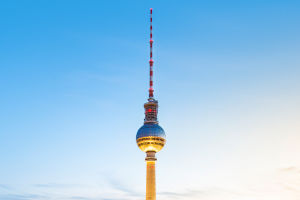Houston, Texas, is home to some of the busiest and most vital shipping ports in the United States. Known for its bustling energy sector, Houston's ports play a crucial role in global trade, particularly in oil, gas, and petrochemical exports.
For Lykkers interested in exploring Houston's ports or understanding their importance, here’s a guide to the major shipping hubs in this vibrant city.
Port Houston
Port Houston, also known as the Port of Houston Authority, is the largest and most prominent port in the area. It stretches along the Houston Ship Channel, covering over 50 miles and comprising numerous terminals that handle cargo, containers, and bulk goods. Port Houston ranks among the top ports in the U.S. for international cargo volume and supports countless industries by facilitating the export of oil, chemicals, machinery, and more.
Entry Fee: The port itself is not open for public visits; however, certain visitor areas, such as the Sam Houston Boat Tour, are free.
Sam Houston Boat Tour: Offers a 90-minute boat tour along the Houston Ship Channel. Available Tuesday through Saturday, it’s free but requires advance reservations.
Nearby Attractions: The port area is close to industrial landmarks and the San Jacinto Battleground, offering additional points of interest.
Bayport Terminal
Located near Seabrook, Bayport Terminal is a key component of Port Houston and focuses primarily on containerized cargo. It’s one of the most modern and technologically advanced terminals in the Gulf of Mexico, serving as a major gateway for imports and exports. This terminal also supports the booming petrochemical industry, handling containerized chemical shipments essential to the Houston economy.
Entry Fee: Access is restricted to port personnel and approved visitors.
Open Time: Operates 24 hours, handling cargo around the clock to keep up with international demand.
Proximity: Bayport Terminal is situated close to the Kemah Boardwalk, a popular spot with waterfront attractions and restaurants, offering Lykkers a convenient location to explore nearby.
Barbours Cut Terminal
Barbours Cut Terminal, located in the La Porte area, is another critical port facility under Port Houston’s management. It’s one of the busiest container ports in the Gulf, handling a high volume of consumer goods, machinery, and industrial materials. Known for its efficiency, Barbours Cut Terminal features advanced cranes and automated systems that ensure smooth and fast processing of shipments.
Entry Fee: Restricted access for security, with entry limited to authorized personnel.
Best Nearby Spots: Nearby Sylvan Beach Park provides a scenic location for relaxation, offering views of passing ships along with fishing, picnicking, and swimming options.
The Importance of Houston’s Ports
Houston’s ports are integral to the U.S. economy, particularly for the energy and petrochemical sectors. They connect American goods to global markets and bring in essential imports that fuel industries across the nation. This network of ports, particularly along the Houston Ship Channel, has transformed the city into a vital hub for international trade.
Getting Around Houston’s Ports
While public access to the actual port areas is limited due to security and operational reasons, there are several ways to get a glimpse of Houston’s shipping industry:
Sam Houston Boat Tour: A family-friendly, informative boat tour along the Houston Ship Channel. It’s a great way to see cargo ships and learn about the port’s operations.
Public Transport: METRO services provide bus routes across Houston, although direct routes to the port areas are limited. Rideshare services and taxis are also available.
Driving Directions: Most of Houston’s main ports are accessible via major highways, such as I-10 and State Highway 146, with nearby parking for observing from public areas.
Practical Tips for Lykkers Visiting Houston
Weather: Houston’s climate is humid and warm, particularly during summer. Dress comfortably and carry water if planning outdoor activities.
Best Time to Visit: Houston’s ports operate year-round, but spring and autumn offer milder weather for outdoor tours and nearby attractions.
Nearby Dining Options: In the port areas, nearby towns like La Porte and Seabrook offer various dining options, from seafood to Texan barbecue.
Final thoughts
Houston’s ports are the city’s lifeblood, supporting industries, jobs, and international connections.
While direct access to port facilities is limited, Lykkers can still experience the port’s scale and significance through boat tours and nearby viewpoints.
Exploring Houston’s port scene offers a unique perspective on global trade and the city’s industrial backbone.


